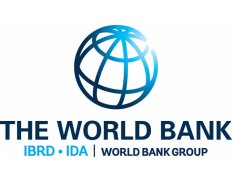Print

Consultancy Services District Teacher Training Program for Eight (North and Northern Province of Afghanistan) [DT3] Package I
Details
Locations:Afghanistan
Start Date:Dec 21, 2013
End Date:Feb 21, 2015
Contract value: USD 12,953,361
Sectors: Education, Training
Description
Project: P106259 - Afghanistan - Second Education Quality Improvement Program
Contract Reference No: MoE/CS/EQUIP/17
Scope of Contract: Consultancy Services District Teacher Training Program for Eight (North and Northern Province of Afghanistan) [DT3] Package I
Contract description: Consultancy ServicesDistrict Teacher Training Program for Eight (North and Northern Province of Afghanistan) [DT3] Package I
Scope of contract:
The DT3 modality is an innovative MoE initiative for in-service teacher training bringing knowledge, systems, and empowerment to the districts of Afghanistan in an effort to increase access and quality of education. DT3 has installed a team of experts in each district to provide immediate training for teachers and school principals and school administrators, and offers an array of professional development activities enabling them to better serve students. The teams will be based in district high schools where they exist, or in other MoE facilities where high schools do not exist. In districts where high schools are not present, the MoE will establish a high school based on assessment of needs and priorities. All schools in the district will be mapped and clustered and training will be taken to schools within the district. School clusters are groups of schools that are close enough to each other that they can effectively share DT3 training resources. One school in the cluster, the school most easily accessible to all others, will be designated a training site or “hub school”, where DT3 training will take place. Identification and mapping of school clusters and training-site schools must allow female teachers to participate in DT3 teacher training[1][1]. In cases where there are not sufficient numbers of schools in close proximity, the DT3 team will be required to visit individual schools. In districts where DT3 cannot be deployed due to insecurity, face-to-face training will take place wherever possible in the provincial headquarters where the MoE will transport and house its teachers during the training period. Materials for delivering INSET-IV and INSET-V are being developed by the TED.
Training:
*Provision of INSET-IV and INSET-V training
*Provision of SMT-V and SMT-VI training
Follow-on:
*Class observation
*Mentoring
*Individual teacher coaching
*High school teaching assistance wherever needed
*Provision of support to TLCs and PLCs
Provide follow on activities which, include: classroom teaching and learning observation and documentation, individual teacher coaching and mentoring, establishing school level learning circles as learning communities, attending teachers’ meetings to receive feedback on utility of training, classroom visits and teacher feedback sessions.
Principal and administrator training and follow on activities including overall responsibilities for school management and safe healthy school environment, management of resources, understanding and leadership in evaluation of instruction, purpose full classroom visits and teacher feedback sessions for different reasons including monitoring and evaluation using separate forms for record keeping, individual coaching, updating on administrator professional information, and establishment of professional support systems for school leaders and classroom teachers.
Monitor DT3 activities
As an integrated component of the DT3 modality, the consultant will train school principals and headmasters to manage better the delivery of education in their schools. Principals and headmasters are also educated first as teachers and are responsible for ensuring raised teaching standards, they need to understand how teachers are being trained and in what principles and practices for their classes. Therefore all school administrators must have taken INSET training and be familiar with the contents.
The major objectives of this project are to develop the administrative and leadership skills for school administrators in order to improve the quality of instruction and learning outcomes in schools and classroom. This includes knowledge and applied skills in developing a school climate that supports student learning and teacher collegial professional development. The school climate encompasses creating a safe, secure, and healthy environment; it includes working with parents and the community to have clear communication and support; it includes support of student learning by ensuring that classrooms are environments where all students enjoy learning and make progress.
The Principal or Head Master of School will be given on-going training in specific areas of school management appropriate for Afghanistan. Principals will be involved in identifying topics for training and discussion and in developing a plan for delivery of training. By including these administrators in their own needs assessment and in designing their training activities, the program builds capacity and facilitates the beginning of a transition to sustain this professional development. Program trainers and monitors will focus intensely with school administrators on developing their understandings of how to improve classroom instruction by classroom observations and follow-up “clinical” interview with teachers that will include evaluations and recommendations kept on file. They will also be trained in techniques that encourage peer support and sharing of ideas for improving instruction; and the administrators will learn the importance of mentoring and the difference between mentoring and monitoring. The technique of school “walk around” will be introduced and clarified to administrators in order to provide them with a system for observing the school climate as a whole in addition to focusing on classrooms where teacher need special improvement.
These techniques supporting and evaluating teacher instructional improvement, mentoring teachers and monitoring both classrooms and the total school environment, will be practiced regularly and consistently in order to make them an expected routine part of school planning and administration. These important activities will not be viewed as an external piece of the training, but will be integrated in the training packages developed by MoE and institutionalized through the DT3 program follow-up in schools activities.
A second broad objective focuses on the teacher’s skills and knowledge. The school administrator needs to understand and share the goals of DT3, in support for teacher professional development and classroom skills. The DT3 program will facilitate the development of teachers as professionals by providing training for specific subject areas identified as areas of need; by strengthening teaching strategies to improve student learning; to strengthen the professional development networks including Teacher Learning Circles, Principal Learning Circles, participation in development of a national and provincial network of activities for educator professional development encouraging individual planning for career ladder advancement.
The DT3 team of trainers and others with monitoring and feedback responsibilities, as members of the DT3 teams, and will have the knowledge and skills to enable them to provide the school administrators and the teachers with practical strategies to improve their work and to meet individual student needs. The DT3 will not “train and drop”, but will have a sustained follow-through and follow-up plan that is collaborative rather than authoritative, in working with educators at all levels.
The number of DT3 members will be based on a ratio of one (1) DT3 staff member for every 35 teachers per district, or 10 DT3 staff per district, whichever is greater. Numbers of teachers per district are determined by the MoE school survey data. However, these numbers must be verified in each district with confirmation of change in number of teachers, if any, to be confirmed by the Provincial Education Department. The personnel for a typical DT3 will comprise: 1 Team Leader (TL), 30% Core Members (CM), 70% Teacher Training Members (TTM).
Gender parity must be given a greater consideration to ensure that there are sufficient female DT3members. In the provincial-capital the DT3 team will comprise one (1)TL, 70% CM and 30% TTM. The consultant will also provide one or more specialist Principals Training Leaders (PTL) and Principals Training Team Members (PTTM) at the provincial level, depending on the size of the province and the number of school principals. The ratio of PTTM is 1: 40 school principals.
Core Members and Training Team Members will receive training through Senior Trainers, Principal Training Leaders and Team Leaders respectively at the district level, who in turn will train teachers and school principals the district level. Senior Trainers, Team Leaders Principal Training Leaders and Principals Training Team Members will be trained by TED in Kabul organized by the Consultant according to contractual agreement. The number of senior trainers and principal training leaders will depend on the number of DT3 and number of school Principals per province respectively, and may range from one to four.
